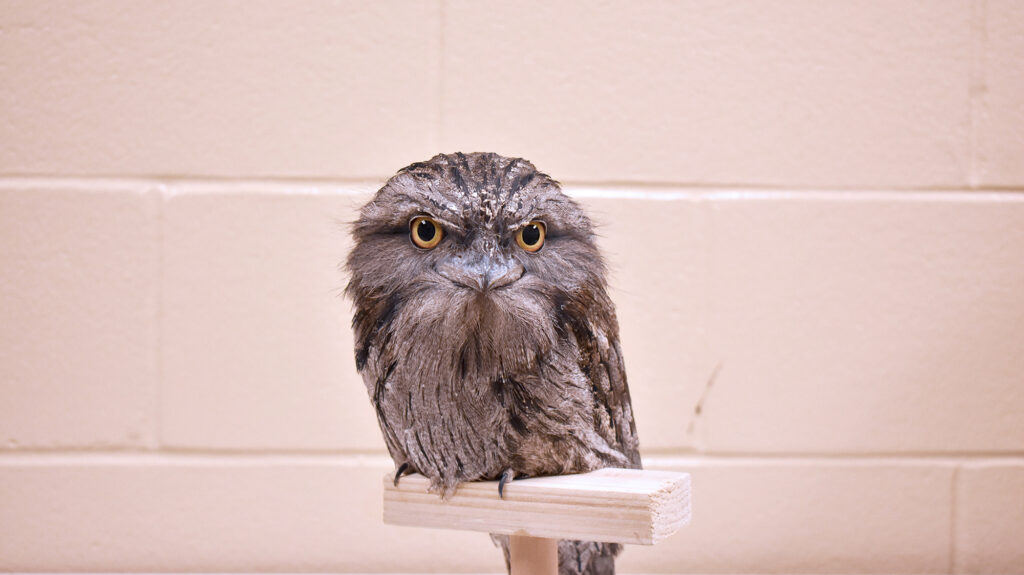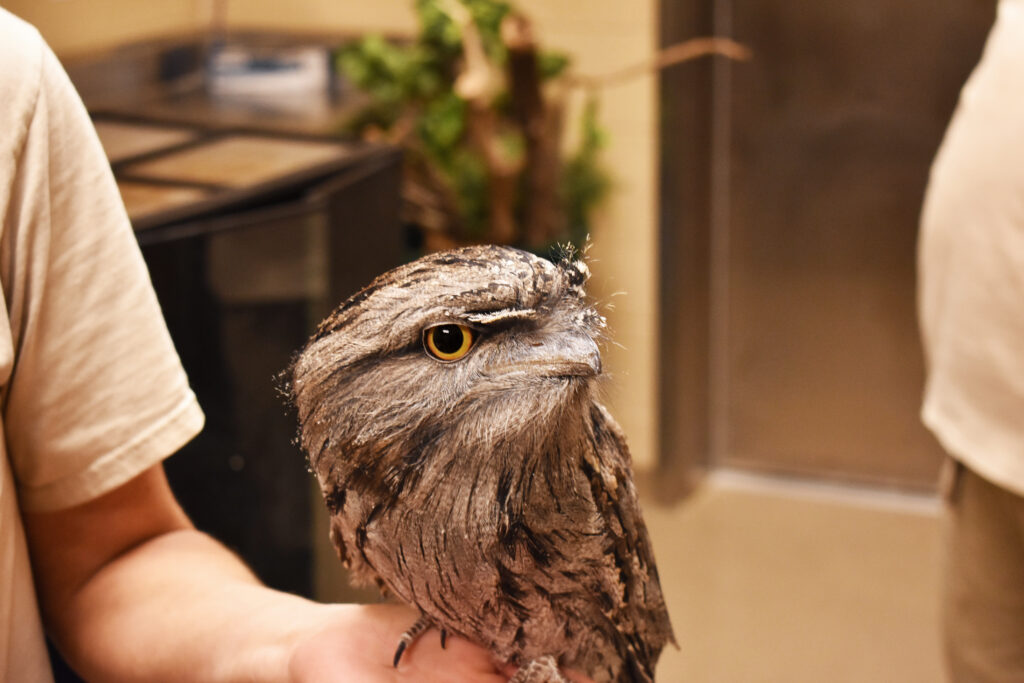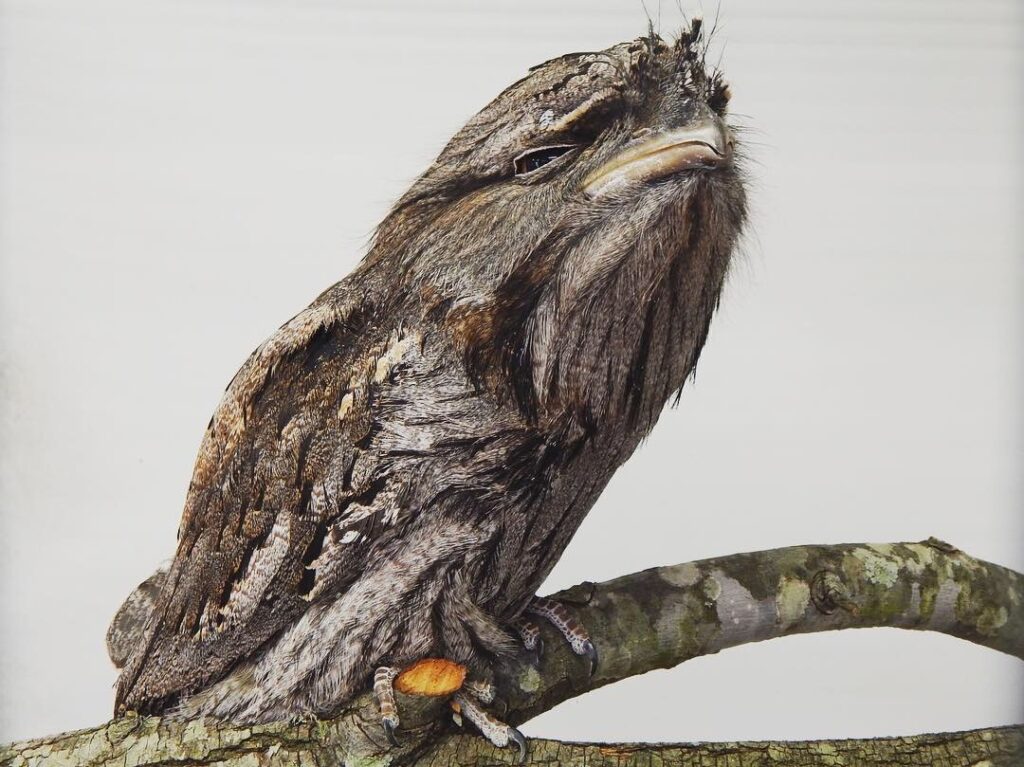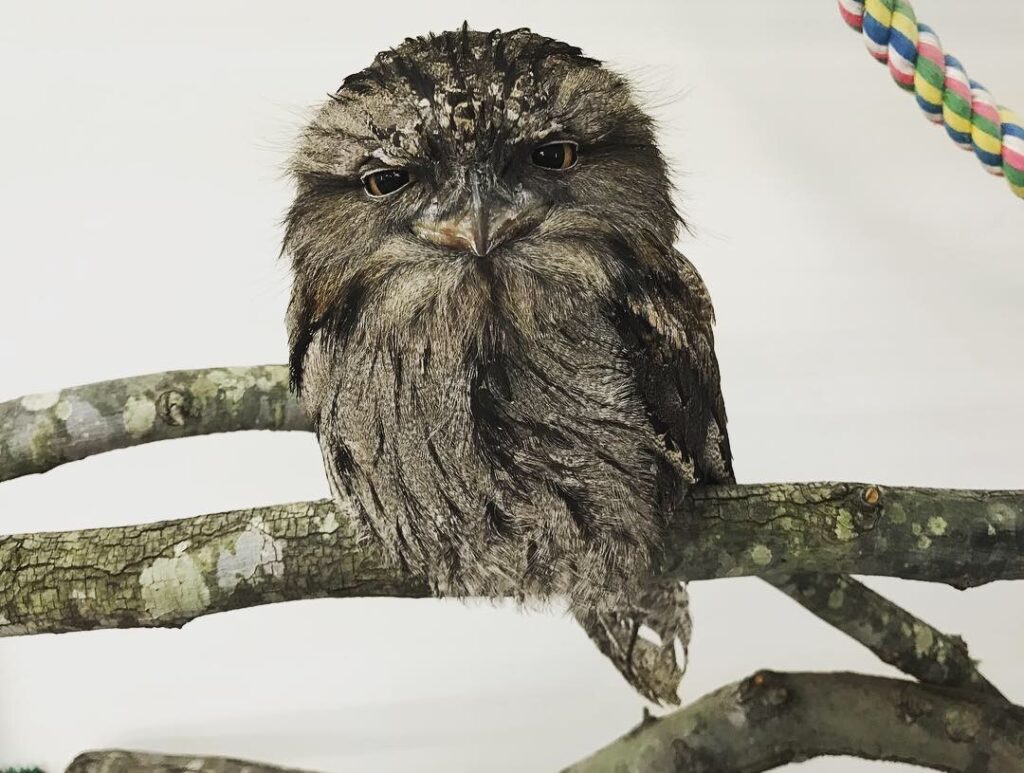An Ambassador for Her Species
Located behind-the-scenes near the ZooLive! stage lies our Program Animal Building, or PAB for short. The animals that live in the PAB are ambassadors for their species and represent their counterparts in the wild through education programs.
When the Zoo acquires a new Animal Ambassador, our Program Animal staff spend significant time with the animal to learn their individual behavior, build a positive relationship with the animal, and to ultimately train and condition it to demonstrate certain behaviors. These behaviors could include voluntarily entering and exiting a kennel, voluntarily participating in their own veterinary care, such as accepting vaccinations or allowing blood to be drawn, demonstrating natural behaviors to show their natural history, and touching targets, among many other behaviors.
In September, the Zoo welcomed its newest Animal Ambassador, Chili the Tawny frogmouth. After a brief quarantine period, Chili began her conditioning to prepare for educational programs.

A Tawny frogmouth is a species of carnivorous bird from Australia, but the species is not considered a bird of prey. Most people have never even heard of the species, or associate them as a species of owl. Tawny frogmouths are not related to owls at all, and the most distinct difference between the two types of birds are the shape of their mouths. While owls have smaller beaks, Tawny frogmouths are known for their wide mouths, which are similar in size to that of frogs. They are a very expressive species, and are also known for making various facial expressions and vocalizations.
Chili is around eight months old and was taught a “step up” behavior at the Brevard Zoo before arriving at the Virginia Zoo in September. This behavior involves the bird using its feet to step onto its handler’s hand. Since she knows how to step up, Chili is being trained to voluntarily enter and exit a kennel, accept voluntary nail trims, and stay perched on a hand for longer periods of time.

Training an animal such as Chili is a more complex process than you might think. Our Program Animal staff are trained to understand the natural history of each species they work with, as well as knowledge of the individual in which they are training. Staff also need to understand the basic concepts of positive reinforcement training, which involves reinforcing (rewarding) the behavior we are looking for, and never using negative reinforcement or discipline. The animals also always have the ability to choose to participate in the training session or not; as animal trainers, it is our job to make the training as fun and interesting for the animals as possible!
Positive reinforcement techniques at the Zoo can utilize a clicker, which makes a sound that the animal will learn to associate with the correct behavior and the reinforcement (or reward) the animal will receive. For several animals, including Chili, food can be used as positive reinforcement. When Chili demonstrates behaviors she is asked for, she may be rewarded with foods you can find in her regular diet such as a variety of mice, crickets and several types of worms like meal worms, super worms, and wax worms. Food isn’t the only type of reward, or positive reinforcement, that the animals can receive – sometimes it can be a favorite enrichment item, tactile rewards for animals that find that rewarding, or even just positive attention from the staff. A positive reinforcer or reward can be anything that animal enjoys.
The behaviors Chili and other Animal Ambassadors are learning to demonstrate aren’t just for show, they also can help with their own veterinary care. Kenneling is important to transfer Chili to other areas of the Zoo safely, as she is able to fly. Voluntary nail trims help keep Chili healthy. Overgrown nails could inflict pain and could potentially hinder Chili from perching or standing normally.

Animal Ambassadors at the Zoo often leave the PAB to visit classrooms, birthday parties and even TV studios for educational purposes. Staff use these animals to educate the public on the species, what roles they play in the ecosystem, and also give interesting facts about the animals. In Chili’s case, she will help educate people about her species, why she sleeps during the day and is most active at night (which is called being nocturnal), how her feathers help camouflage her from predators and prey, and many other interesting and important facts that hopefully pique her audience’s interest and inspire them to help conserve animals and wild habitats, as well as do more research at home!
Once Chili learns these new behaviors, her training doesn’t end there. She will continue a step further, or will learn new behaviors as needed. She also gets time away from training, too! There is plenty of downtime for this soon-to-be ZooLive! stage superstar, and her handlers are excited to see how she reacts to showers when warmer weather comes around. Yes, we said showers because this species is notorious for taking showers, as their native habitats are found in tropical rainforests. Stay tuned to see when she makes her debut into the world of Virginia Zoo education programs and when you may be able to meet her in person!
